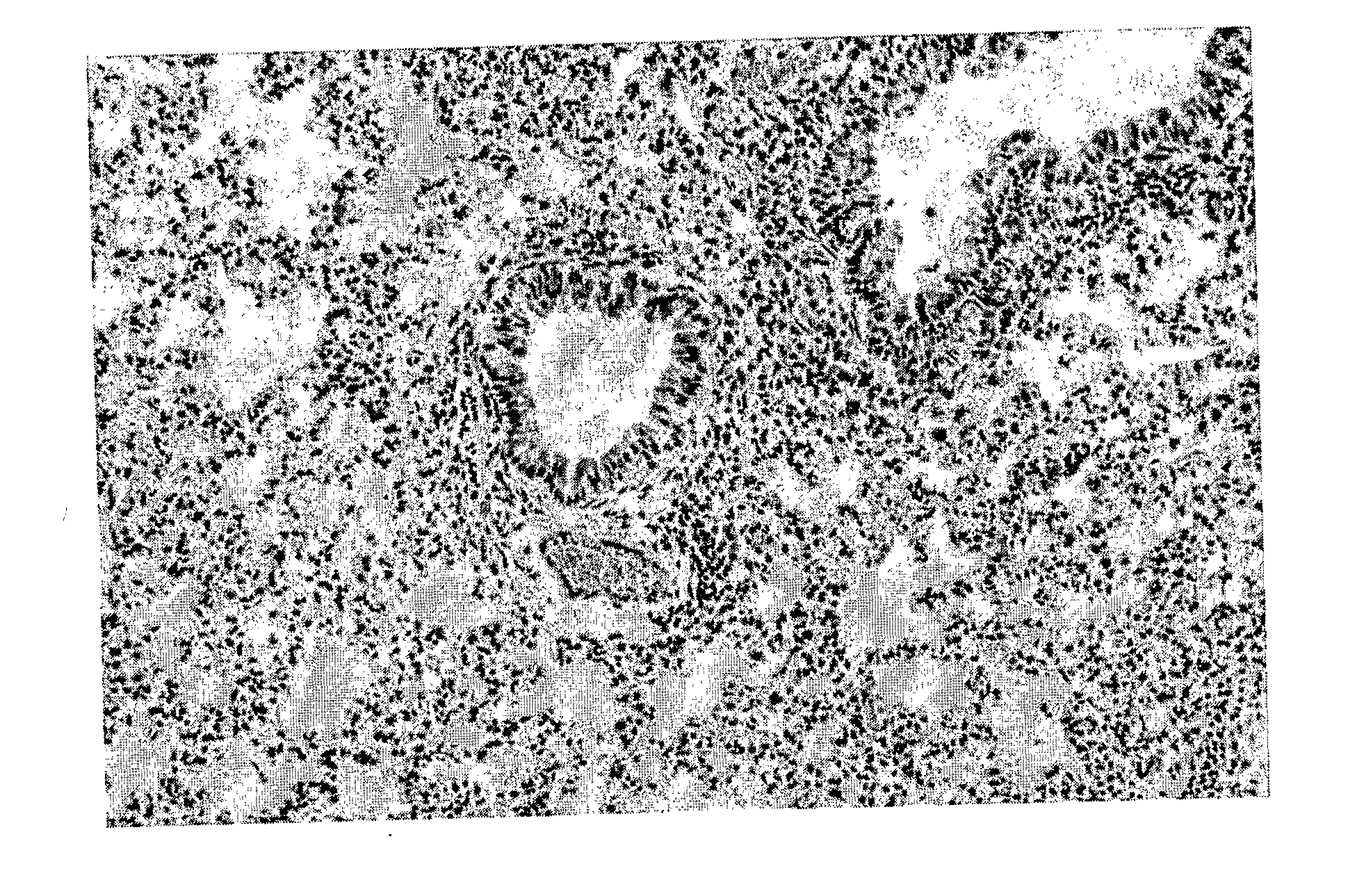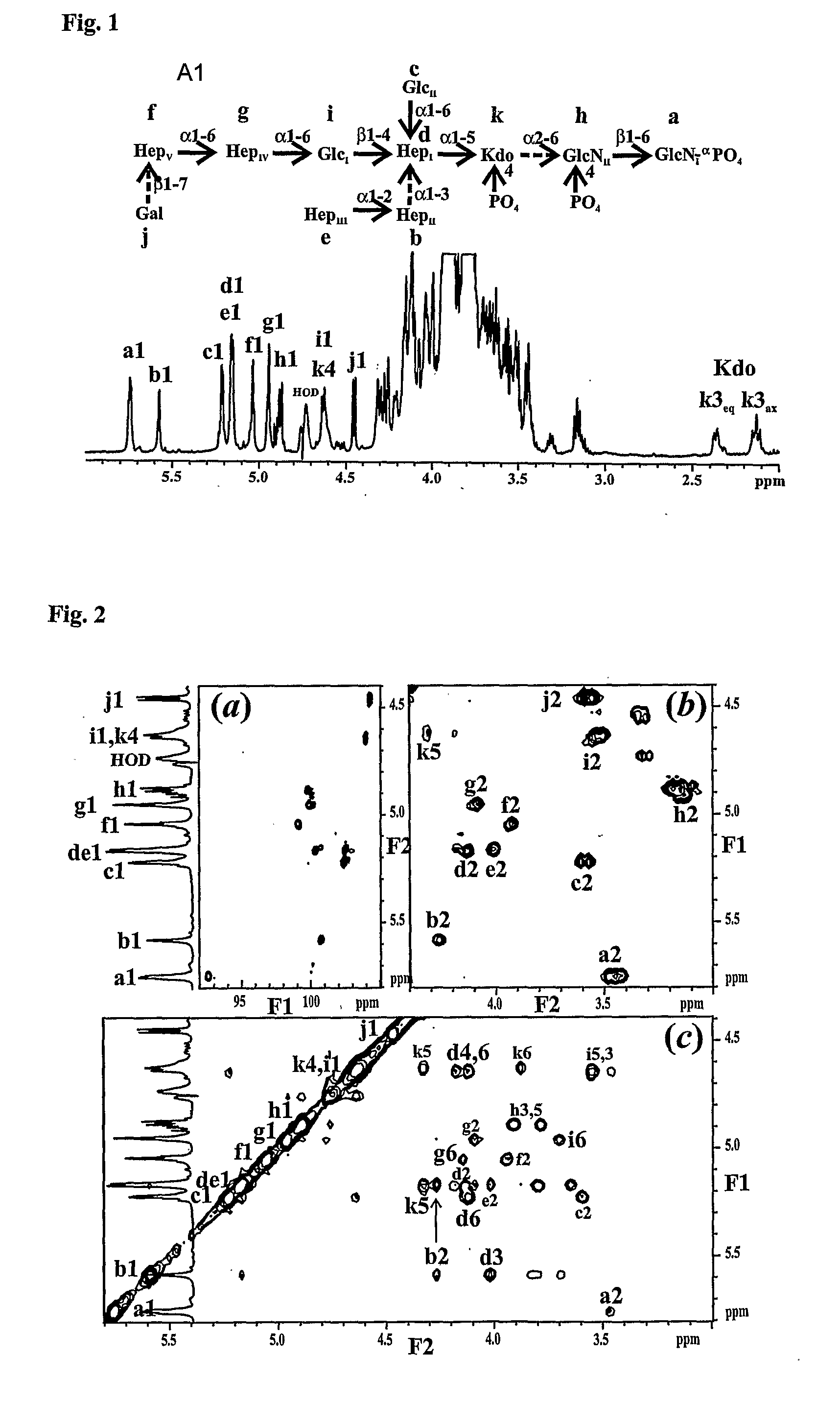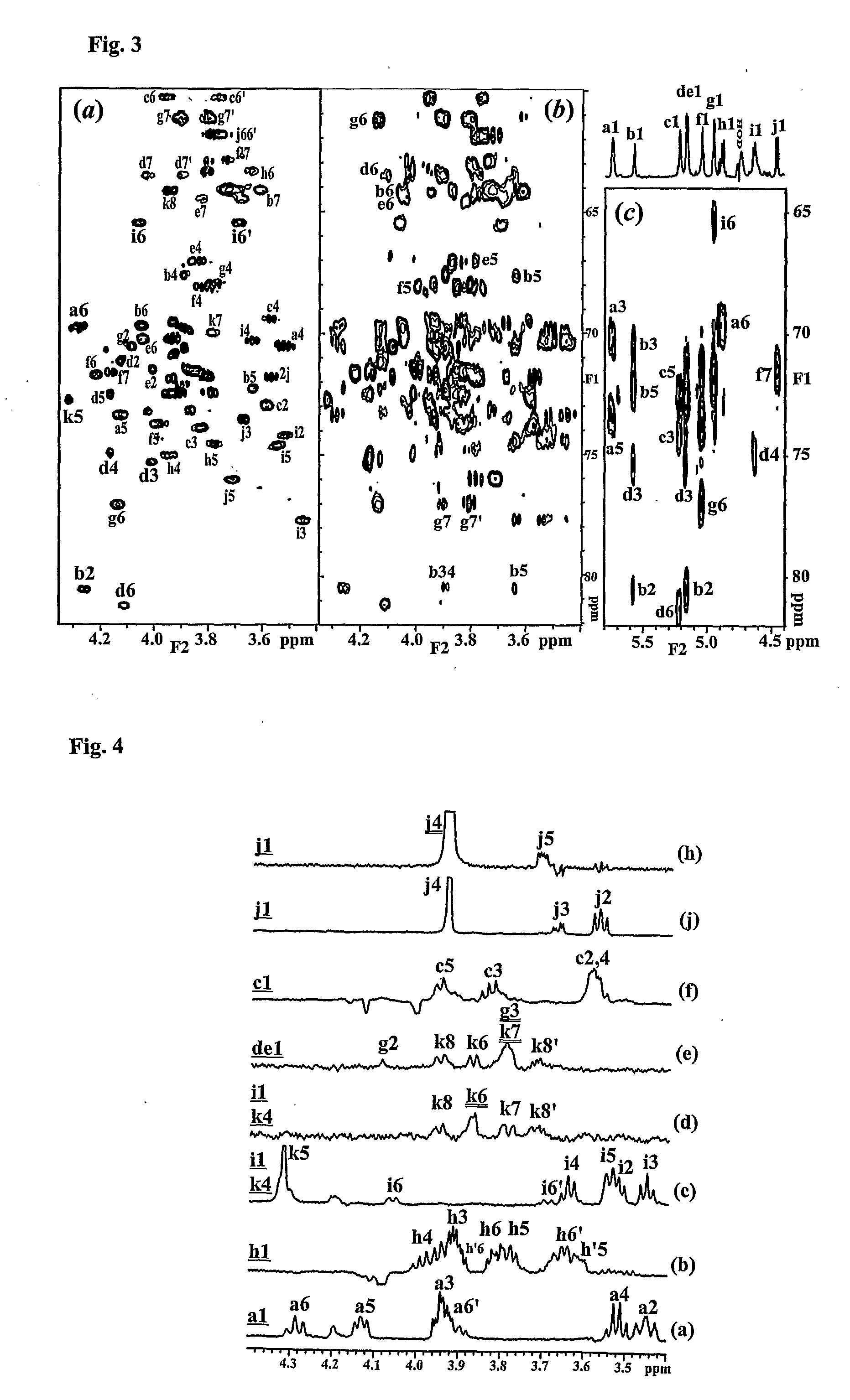Conserved Inner Core Lipopolysaccharide Epitopes as Multi-Species Vaccine Candidates
a technology of lipopolysaccharide and inner core, which is applied in the field of preserved inner core lipopolysaccharide as multi-species vaccine candidates, can solve the problems of major economic losses to the animal farming industry, health problems, and economic loss of commercial farm operations of bacteria, and achieve the effects of preventing human disease, improving immunogenicity, and improving immunogenicity of carbohydrate antigens
- Summary
- Abstract
- Description
- Claims
- Application Information
AI Technical Summary
Benefits of technology
Problems solved by technology
Method used
Image
Examples
example 1
Experimental for Example 1
Preparation of LPS from M. haemolytica
[0145]Pasteurella (Mannheimia) haemolytica serotype A1 (NRCC 4212) was obtained from the Veterinary Infectious Diseases Organization (VIDO), Saskatoon, SK, Canada. LPS was extracted and purified from fermenter-grown bacteria culture by the hot aqueous phenol method as previously described in Severn et al. Carbohydr. Res. 240, 277 (1993).
Deacylation of LPS to give Backbone Oligosaccharides
[0146] Backbone oligosaccharide was prepared as previously described in Severn et al. J. Bacteriol. 178, 1731 (1996) by modification of the deacylation procedure of Holst et al. Ester-bound fatty acids were removed from the lipid A of the LPS by treatment of a sample (400 mg) with anhydrous hydrazine at ambient temperature (20 mL, 37° C., 30 min). Excess hydrazine was destroyed by addition of acetone (three volumes) to the cooled reaction mixture (0° C.). The precipitated O-deacylated LPS product was isolated by centrifugation (500...
example 2
Media and Growth Conditions
[0181] Ap serotypes 1 (strain 4074), 2 (strain 4226), 5a (strain K17) and 5b (strain L20) were initially grown overnight on chocolate agar plates at 37° C. and growths were used to inoculate 1 L of brain-heart infusion (BHI) medium supplemented with β NAD (Sigma N-7004) to a final concentration of 5 ug / ml, haemin (Sigma H-2250) to a final concentration of 5 ug / ml and 1% glucose (10 g). Cultures were then incubated at 37° C. at 200 rpm for 6 hours and used to inoculate 23 L BHI medium (supplemented as above) in a 28 L NBS fermenter. The cultures were then grown at 37° C., with 24 lmin−1 aeration and stirring at 200 rpm for 18 hours. Cells were killed (2% phenol w / v, for 4 hours) and harvested by using a Sharples continuous centrifuge (˜40 g wet weight).
Isolation and Purification of Lipopolysaccharide
[0182] The lipopolysaccharide (LPS) was isolated from the dried cell mass by the hot water / phenol method, following washing of the dried cell mass with orga...
example 3
[0188] This Example forms the basis of a publication in Glycobiology. 15: 323 (2005). Investigation of P. multocida strain Pm70
[0189] Sugar analysis of the purified LPS revealed glucose (Glc), galactose (Gal) and L-glycero-D-manno-heptose (LD-Hep) in the approximate ratio of 4:2:3 respectively. Small amounts of N-acetyl-glucosamine (GlcNAc) and N-acetyl-galactosamine (GalNAc) were also identified and in contrast to other veterinary pathogens recently studied no D-glycero-D-manno-heptose (DD-Hep) was identified (Brisson, et al, 2002; St. Michael et al, 2004). GLC analysis of the core oligosaccharide (OS) derived butyl-glycosides revealed Glc, Gal and GalNAc residues to be present as their D-isomers.
[0190] O-deacylated LPS (LPS-OH) was prepared and fractionated by gel filtration chromatography and analysed by CE-MS (Example 3, Table 1). A simple mass spectrum was observed with one major triply charged ion of m / z 1173.8 corresponding to a molecule of 3525 amu consistent with a compos...
PUM
| Property | Measurement | Unit |
|---|---|---|
| pH | aaaaa | aaaaa |
| spin lock time | aaaaa | aaaaa |
| pH | aaaaa | aaaaa |
Abstract
Description
Claims
Application Information
 Login to View More
Login to View More - R&D
- Intellectual Property
- Life Sciences
- Materials
- Tech Scout
- Unparalleled Data Quality
- Higher Quality Content
- 60% Fewer Hallucinations
Browse by: Latest US Patents, China's latest patents, Technical Efficacy Thesaurus, Application Domain, Technology Topic, Popular Technical Reports.
© 2025 PatSnap. All rights reserved.Legal|Privacy policy|Modern Slavery Act Transparency Statement|Sitemap|About US| Contact US: help@patsnap.com



